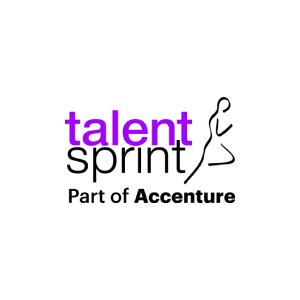Diversity and Allyship in the DeepTech Industry

In the #WhatIndustryWants webinar, Anjana Chiramel, Sr. Human Resources Manager, GSMO India, Microsoft, shared interesting insights on diversity and inclusion in the tech industry.
Do you know in which year women started coming to the Harvard Law School to the campus? 1953 is when the doors were opened for women. But these women had no restrooms to go to!
How many women CEOs do we have at large companies in India? Just five percent!
As unbelievable as these things may sound, diversity and inclusion have long suffered at the workplace. Many aspects of a particular gender, race, color, or orientation have been ignored, dismissed, or treated with disrespect because companies had paid no attention or importance to workplace diversity. It’s no secret that the tech industry in India has struggled over the years to build a socially equitable workplace. However, most global enterprises today are encouraging an overall inclusive work culture as diversity-hiring witnessed a 32 percent jump in 2020.
A recent McKinsey survey shows that while overall sentiment on diversity was 52 percent positive and 31 percent negative, sentiment on inclusion was markedly worse at only 29 percent positive and 61 percent negative. This encapsulates the challenge that even the more diverse companies still face in tackling inclusion.
Accountability and priority are vital factors that the tech industry needs to underline more and more. This factor is becoming imperative in the current geopolitical landscape, especially for globally connected companies. The global environment is complex, and exclusion can hurt a lot. It affects employees in many ways – like reduced intelligent reasoning, increased self-defeating behavior, reduced prosocial behavior, and decreased well-being.
Diversity pays
So what does diversity make an enterprise gain? Or is it just a social tick-box? Or just some cost that one needs to expend in today’s era of a vocal and aware pool of employees and customers?
It turns out that it is a worthwhile effort, after all.
The McKinsey 2019 data analysis finds that companies in the top quartile of gender diversity on executive teams were 25 percent more likely to experience above-average profitability than peer companies in the fourth quartile. Also, the higher the representation, the higher the likelihood of outperformance. Companies with over 30 percent women on their executive teams are significantly more likely to outperform women between 10 and 30 percent. These companies are more likely to exceed those with fewer or no women executives.
Lack of diversity – that costs too
Recall the Glassdoor survey, which says that 67 percent of job seekers consider workplace diversity essential when considering employment opportunities. Also, 50 percent of current employees want their workplace to increase diversity. In addition, in Glassdoor’s 2020 Diversity Hiring Survey, 76 percent of employees reported that a diverse workforce is an essential factor when evaluating companies and job offers.
It is worth noting how diversity becomes significant to under-represented groups. For example, about 32 percent of employees and job-seekers would not apply to a company with a lack of diversity among its workforce. This expectation is higher for Black (41 percent) job seekers and employees, LGBTQ (41 percent) job seekers, etc.
That’s why many companies have hired dedicated, full-time diversity professionals, to enhance their diversity and inclusivity efforts. As a result, there is an increased demand for roles that can blend HR, recruitment, and leadership responsibilities.
Step up. Now.
A 2021 study on gender equality in the workplace has noticed that the Covid-19 pandemic set workplace equality back by several years. Interestingly, the gender equality index has been projected to drop two points between 2019 and 2021 to levels below that of 2017.
This is a serious issue, and we cannot afford to put it on the back-burner again. In its latest #WhatIndustryWants webinar, TalentSprint also put a spotlight on what diversity and inclusion look like in the tech industry empowered by deep tech. Experts like Anjana Chiramel, Sr. Human Resources Manager, GSMO India, Microsoft, shared fascinating insights on this hot issue.
Yes, the world is diverse. We will better serve everyone by representing everyone on our planet. We will be open to our own biases and changing behaviors to use collective power in the right way. As cited by a Microsoft executive, we do not just value differences; we seek them out and invite them in. And, as a result, our ideas are better, our products are better, and our customers are served in a better way.
We need to address many questions in the new world we enter and build now. Like – Why are companies focusing on increasing diversity at the workplace? What is the proper representation of students irrespective of college, place, or gender? How can responsible industry players lead to the creation of a vibrant and supportive workplace? How to use technology to create a positive change in the workplace?
A strong ally-ship path can help remove unconscious bias and support practicing a true diversity-mind-set at work. Help can also come from Employee Resource Groups that foster diversity and inclusion in many ways – across the spectrum. We need such interventions and efforts – at corporate as well as individual levels. We need to open up our minds to differences. Learn from everywhere around you. Inclusivity is everywhere, and an open mind is a powerful way to make you a better person, too. You will also benefit from your career if you can learn from anyone because you will not have any horizontal limitations.
Can we afford to create a non-productive, unhappy, and under-optimized workplace because of lack of diversity? Or can we do the opposite? The choice is upon us. The choice is to be made now.

TalentSprint
TalentSprint is a leading deep-tech education company. It partners with esteemed academic institutions and global corporations to offer advanced learning programs in deep-tech, management, and emerging technologies. Known for its high-impact programs co-created with think tanks and experts, TalentSprint blends academic expertise with practical industry experience.



